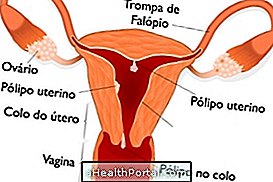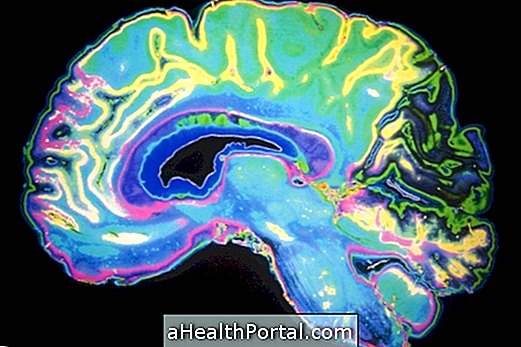Hormonal change is the leading cause of uterine polyp development, so normally women with hormonal disorders such as those with irregular menstruation, bleeding out of the menstrual period, or prolonged menstruation are at increased risk of developing these endometrial polyps.
There is a greater risk of developing uterine polyps in women taking tamoxifen because of breast cancer, in cases of prolonged use of estrogens, polycystic ovary syndrome, and in infertile women.
Most often uterine polyps do not require specific treatment, but the gynecologist can prescribe hormonal medications or choose to withdraw them. Here's how treatment can be done: Treating the uterine polyp to prevent cancer.
The uterine polyp is not cancer, but in some cases it can turn into a malignant lesion, so a new evaluation every 6 months is always important to check if the polyp has increased or decreased in size; if others appeared or if it disappeared. Women at higher risk of developing endometrial cancer are those who, in addition to hormonal changes, are obese, have high blood pressure, or have a family history of uterine polyps.
What are uterine polyps
Generally, uterine polyps are more common in menopausal women; however, they may also occur in younger women, which may cause difficulty in becoming pregnant, depending on the size and location of the polyp.


The uterine polyp, also known as the endometrial polyp, consists of the excessive growth of cells in the inner wall of the uterus, forming cilia-like pellets that extend into the uterus.
Symptoms of uterine polyp
The main symptom of uterine polyp is abnormal bleeding during menstruation, with a greater amount of blood. However, other symptoms include:
- Irregular menstrual period;
- Vaginal bleeding between menses;
- Vaginal bleeding after intimate contact;
- Difficulty getting pregnant
Also, depending on their location and size, they can also cause pain during menstruation, but this can be confused with an ordinary menstrual cramp.
The woman with these symptoms should consult the gynecologist to do exams, such as pelvic ultrasound, to diagnose the problem and initiate appropriate treatment.
Treatment for uterine polyp
Treatment for uterine polyp should be directed by a gynecologist and usually only starts when symptoms or suspected malignancy. Thus, it is common for treatment to be done with hormonal remedies, such as Progesterone, to reduce the size of the polyp until it disappears.
However, if the woman wants to become pregnant and the polyp is causing difficulty in getting pregnant, the doctor can also make a hysteroscopy that consists of inserting an instrument from the vagina to the uterus to remove the uterine polyp. See when to have surgery to remove the uterine polyp.
In severe cases, where the polyp does not disappear with mediation, can not be removed with hysteroscopy or developed for cancer, the gynecologist may advise to have surgery to remove the uterus. See what happens after the uterus is removed.























